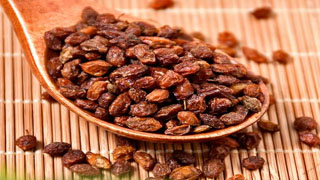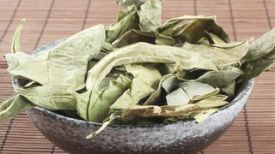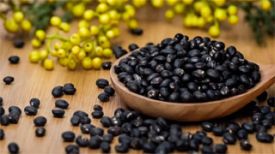
1. Alias
Sour spine, vinegar willow fruit, sour yo, dar, sand jujube.
2. Plant morphology
Deciduous shrubs or trees, 1-5 meters high; Has thick thorns. The branches are densely covered with brown rust scales when young. Leaves alternate, linear or linear lanceolate, blunt pointed at both ends, densely covered with light white scales below; The petiole is extremely short. Flowers bloom before leaves, dioecious plants; Short racemes axillary on the first year branch; Small in size, light yellow in color, with male flowers having a 2-lobed corolla and 4 stamens; The female flower is sac shaped and has two slits at the top. The fleshy flower is surrounded by a tube, nearly spherical in shape, and orange yellow in color. The flowering period is from March to April, and the fruiting period is from September to October.
3. Origin distribution
Born on slopes, valleys, riverbanks, grasslands, and semi-arid sand dunes. Mainly produced in Hebei, Henan, Inner Mongolia and other places.
4. Harvesting and processing
Harvested in autumn and winter when the fruit is ripe or frozen hard. Remove impurities, dry, or steam and dry.
5. Characteristics of medicinal herbs
Spherical or oblate in shape, some with multiple adhesions, each with a diameter of 5-8 millimeters. The surface is orange yellow or brownish red, wrinkled, with short fruit stalks or stem scars at the base, and residual styles at the top. The flesh is oily and soft in texture. The seed is obliquely ovate, about 4 millimeters long and 2 millimeters wide, with a brown surface and a glossy appearance. There is a longitudinal groove in the middle, and the seed coat is relatively hard. The seed kernel is milky white and oily. Mild odor, sour and astringent taste.
6. Sexual Taste Returning to the Classics
Warm in nature, sour and astringent in taste. The spleen meridian, stomach meridian, lung meridian, and heart meridian.
7. Effect and Function
Dispelling phlegm and cough, eliminating food stagnation, promoting blood circulation and dispersing blood stasis. It belongs to the category of digestive medicine.
8. Clinical application
Take 3-9 grams and decoct in water. Used to treat cough, excessive phlegm, indigestion, food accumulation, abdominal pain, blood stasis, meridian obstruction, and bruises. Research has also shown that it has anti-inflammatory, anti radiation damage, anti-tumor, anti-aging, anti rheumatic, and antiviral effects.
9. Pharmacological research
Has lipid-lowering effects, cough and phlegm dispelling effects; Can adjust digestive function and promote ulcer healing; Can enhance immune function; Anti-tumor; Improve cardiovascular system function; Promote hematopoietic function; Reduce whole blood viscosity; Inhibit platelet aggregation; Reduce serum total cholesterol, increase serum high-density lipoprotein cholesterol and liver total cholesterol; Inhibit the formation of experimental thrombosis; Liver protection; Anti gastric ulcer; Antioxidant; Anti-inflammatory; Enhance the phagocytic function of the reticuloendothelial system; Anti allergic.
10. Chemical composition
Containing multiple physiologically active substances. There are mainly vitamins, isorhamnetin, proteins, carotenoids, amino acids, amides, flavonoids, apigenin, quercetin, kaempferol, β - sitosterol, cryptoxanthin, sugars, organic acids, steroidal acids, fatty acids, lipids, and trace elements.
11. Usage taboos
Not yet clear.
12. Compatibility prescription
① To treat cough and phlegm, divide sea buckthorn, licorice, white raisins, gardenia, and frankincense into equal parts. Finally, add a few ice slices. Take 1.5 to 3 grams each time with warm water. (Inner Mongolia Chinese Herbal Medicine)
② Treat stomach pain, indigestion, gastric ulcers, subcutaneous bleeding, menstrual disorders: 3-9g dried seabuckthorn. Take it by boiling it in water, or smash the ripe fruit and boil it in water. Dissolve the medicinal juice in water, filter off the residue, and concentrate the filtrate into a paste. Take it in moderation. (Medicinal Plants in Desert Areas)
③ To treat sore throat: Rub the fresh seabuckthorn fruit until smooth, wrap it in gauze, squeeze its juice, add white sugar, and rinse with warm water. (Medicinal Plants in Desert Areas)
④ Treatment for amenorrhea: 18g of pollen, 15g of saltpeter, 9g of sea buckthorn and rhubarb each, 6g of scorpion, 1.5g of hawthorn, and 1.5g of alkali flour. Mix in fine powder, 1.5 to 3 grams each time, and bring warm water. (Inner Mongolia Chinese Herbal Medicine)
⊙ The content of the article is for clinical reference only. Non TCM professionals are not allowed to test drugs.


